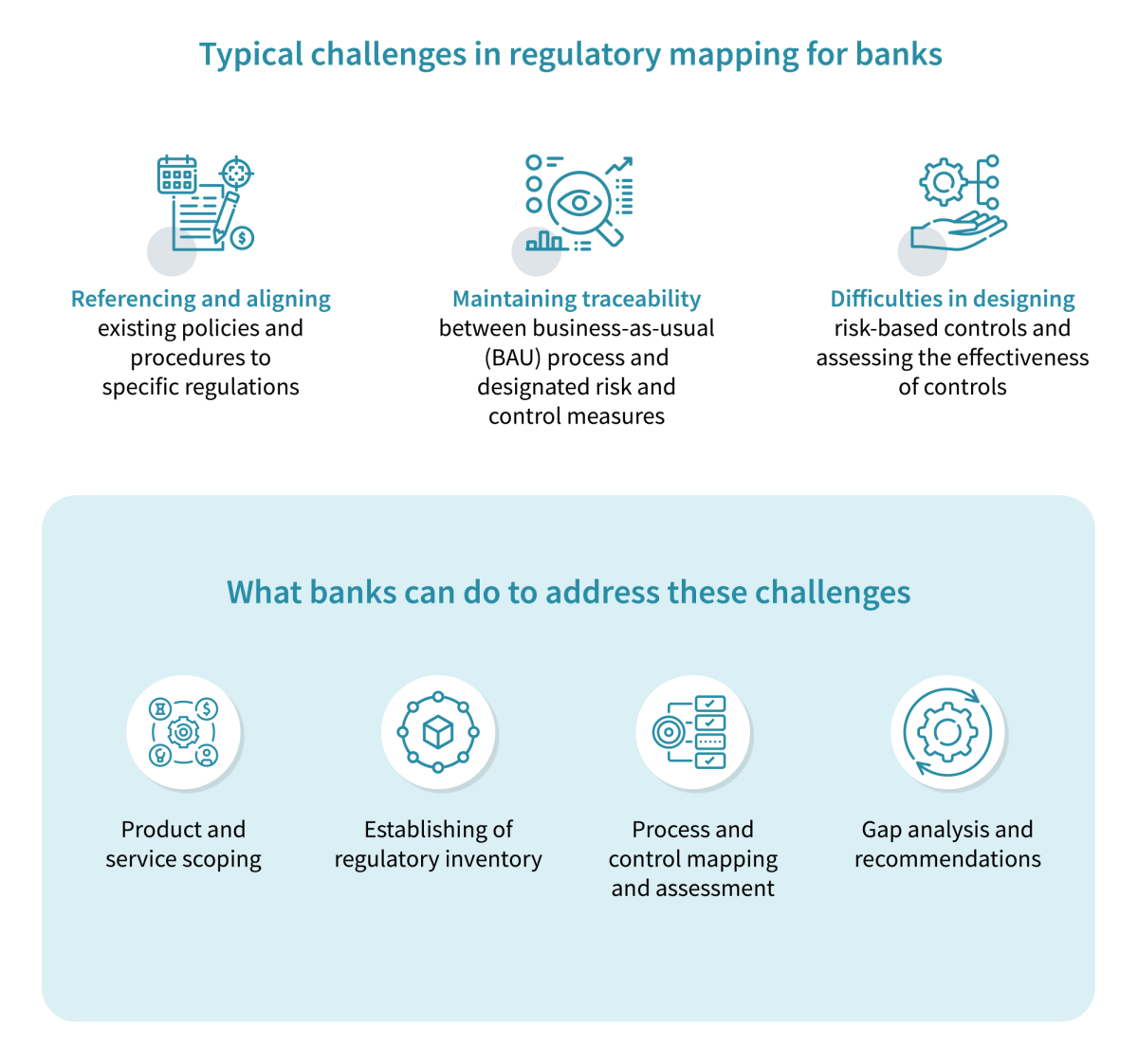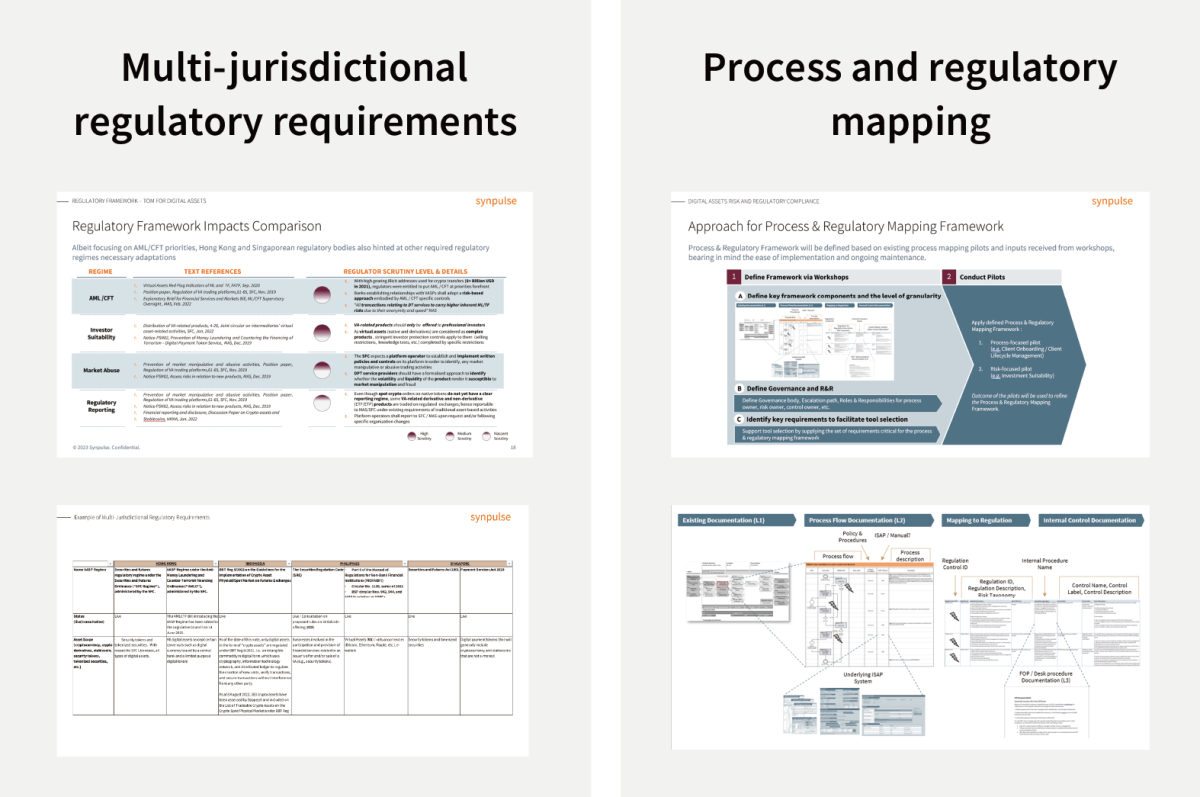Summary
- Banks are increasingly incorporating digital assets into their wealth management offerings, such as adding digital assets linked products on the shelf and developing blockchain-based product distribution channel.
- Banks face obstacles in digital asset compliance due to heightened global scrutiny and limited resources and knowledge.
- Specific challenges include aligning policies & procedures to regulations, implementing processes controls to risk measures, and assessing control effectiveness.
The rise of digital assets like cryptocurrencies and tokenised assets in recent years has led to a growing number of banks incorporating digital assets into their wealth management products.
With increasing regulatory scrutiny of digital assets worldwide, banks engaged in such products or technologies must conduct comprehensive reviews of relevant regulations and perform thorough regulatory mapping to identify potential gaps or shortcomings in their current procedures and controls. This ensures adherence to compliance standards and helps maintain regulatory integrity.
Challenges banks face with regulatory mapping
Banks are encountering significant difficulties due to the evolving and complex nature of digital asset regulations. Limited resources and expertise often hinder their ability to manage the associated risks and ensure compliance. Common challenges include aligning existing policies with specific regulations, maintaining traceability between business-as-usual (BAU) processes and designated risk and control measures, and designing risk-based controls while assessing their effectiveness.

Mitigating challenges through regulatory inventory and mapping
Building a regulatory inventory and conducting regulatory mapping across all products, services, and controls can significantly mitigate these challenges. By establishing a detailed regulatory inventory, banks can ensure they are aware of all relevant regulations. Conducting regulatory mapping helps banks align their processes and controls with these regulations, ensuring comprehensive compliance and identifying any gaps or shortcomings in current practices.
What regulatory mapping constitutes
Regulatory mapping involves several critical steps:
Product and service scoping: Identifying the full range of digital assets products and services offered.
Establishing a regulatory inventory: Creating a comprehensive list of all applicable regulations, guidelines, and industry standards.
Process and control mapping and assessment: Aligning bank processes and controls with the regulatory inventory to ensure compliance.
Gap analysis and recommendations: Identifying any discrepancies between current practises and regulatory requirements, and providing recommendations for improvement.
How Synpulse can help
Synpulse enhances a bank’s processes and controls through digital assets regulatory inventory and mapping services. We create a comprehensive inventory of digital assets across multiple jurisdictions, enabling precise alignment of products, services, processes, and controls with relevant regulations and industry best practices.
Our deliverables include a detailed regulatory inventory, mapping of existing processes and controls against regulatory obligations, gap analysis, industry best practices, and multi-jurisdictional requirement reports. These tools ensure comprehensive compliance and mitigate risks associated with digital assets.

With extensive experience in digital assets and regulatory compliance, Synpulse assists financial institutions in conducting thorough regulatory assessments across various business lines and jurisdictions.
Leverage our expertise to start and accelerate your digital asset journey today, speak with our experts to learn more about risk and compliance management for digital assets.


